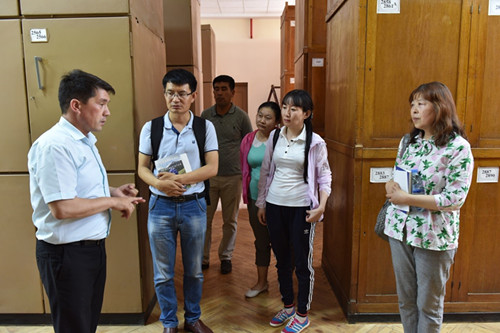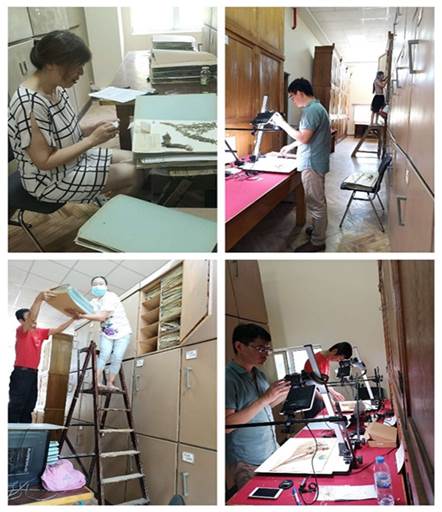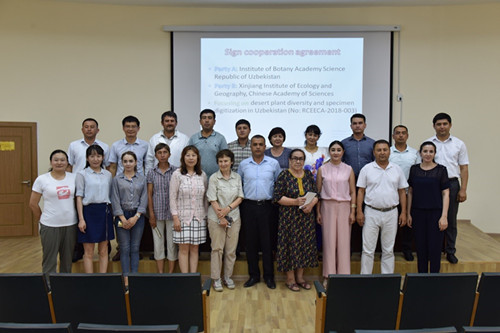Central Asia’s Desert Plants Diversity and Digitalization Project Team Went to Uzbekistan for Cooperation and Research
Between July 28th and August 9th, a group of people led by Professor Feng Ying, member of Xinjiang’s Endemic Species Classification and Research Team of Xinjiang Institute of Ecology and Geography, Chinese Academy of Sciences, went to Botany Institute of Uzbekistan Academy of Sciences to implement the research work of “Uzbekistan’s Desert Plants Diversity and Digitalization Research” project.
This project, as one of the key foreign projects launched and funded by the Research Center for Ecology and Environment of Central Asia (RCEECA) in 2018, aims to take advantage of specimen informationization building experience of Xinjiang’s Endemic Species Classification and Research Team of Xinjiang Institute of Ecology and Geography and build Uzbekistan National Specimen Museum desert plants database that meets the demand of Botany Institute of Uzbekistan Academy of Sciences within 3 years through bilateral cooperation. And it will also realize information sharing and lay solid foundation for long-term deep and expanded research.
During the visit, team members discussed and exchanged views on the regulations of specimen digitalization and extraction of plants DNA specimen with Academician Tojibaev Komil, Director of Botany Institute of Uzbekistan Academy of Sciences, Orzimat Turginov, Curator of Uzbekistan National Specimen Museum and management staff. Professor Feng Ying, Deputy Professor Shi Wei, Deputy Professor Li Wenjun and Doctor Cao Qiumei also conducted academic exchanges on the topics of key tasks of Uzbekistan’s Desert Plants Diversity and Digitalization, application of DNA bar code, digitalization of Uzbekistan’s Desert Plants Specimen and the promotion of Biotracks, an effective app for field work.
While working together, members of Xinjiang Institute of Ecology and Geography completed the bar code making, extraction and filming of 9,326 plants with a memory capacity of 99.2GB. They also completed specimen digitalization for plants of 6 families and 21 genus and offered training to the working staff of Uzbekistan Botany Institute based on the procedures of specimen digitalization. On August 5th, Professor Liu Wenjiang, Deputy Managing Director of RCEECA, who was visiting Uzbekistan, went to visit the project team and exchanged views on the progress and problems of the project.
Botany Institute of Uzbekistan Academy of Sciences is mainly involved in the plants classification and research of Central Asia, especially in the selection and cultivation of drought-resistant plants suitable for arid deserts. Therefore, it knows the desert plants and plants resources of Central Asia countries in a more comprehensive way. Uzbekistan National Specimen Museum (TASH), founded in 1831, now has a collection of 1.5 million plant specimen. But TASH has only completed digitalization of 3,000 specimens and still hasn’t set up a complete biodiversity database.

Academician Tojibaev Komil introduces Uzbekistan National Specimen Museum

Members of the project at work

Group photo after the exchange and discussion meeting

